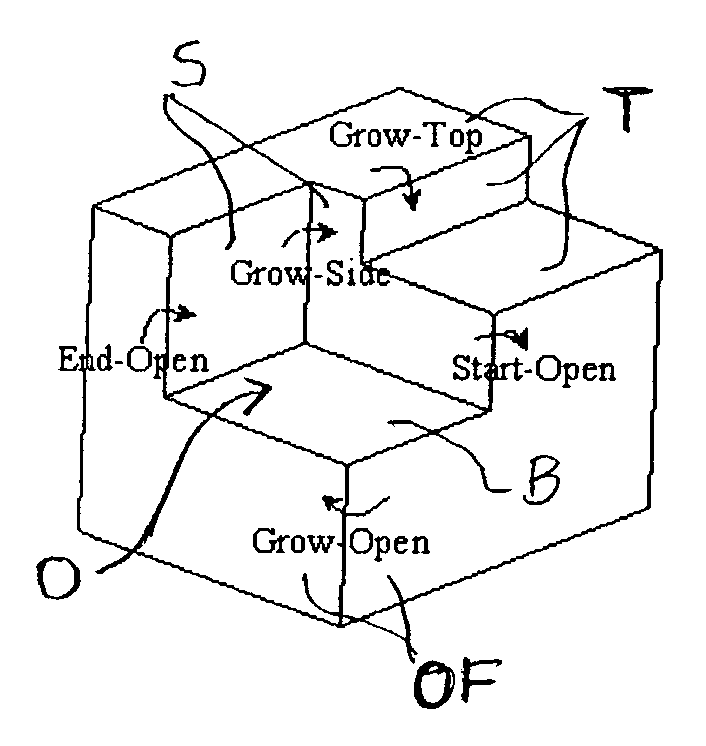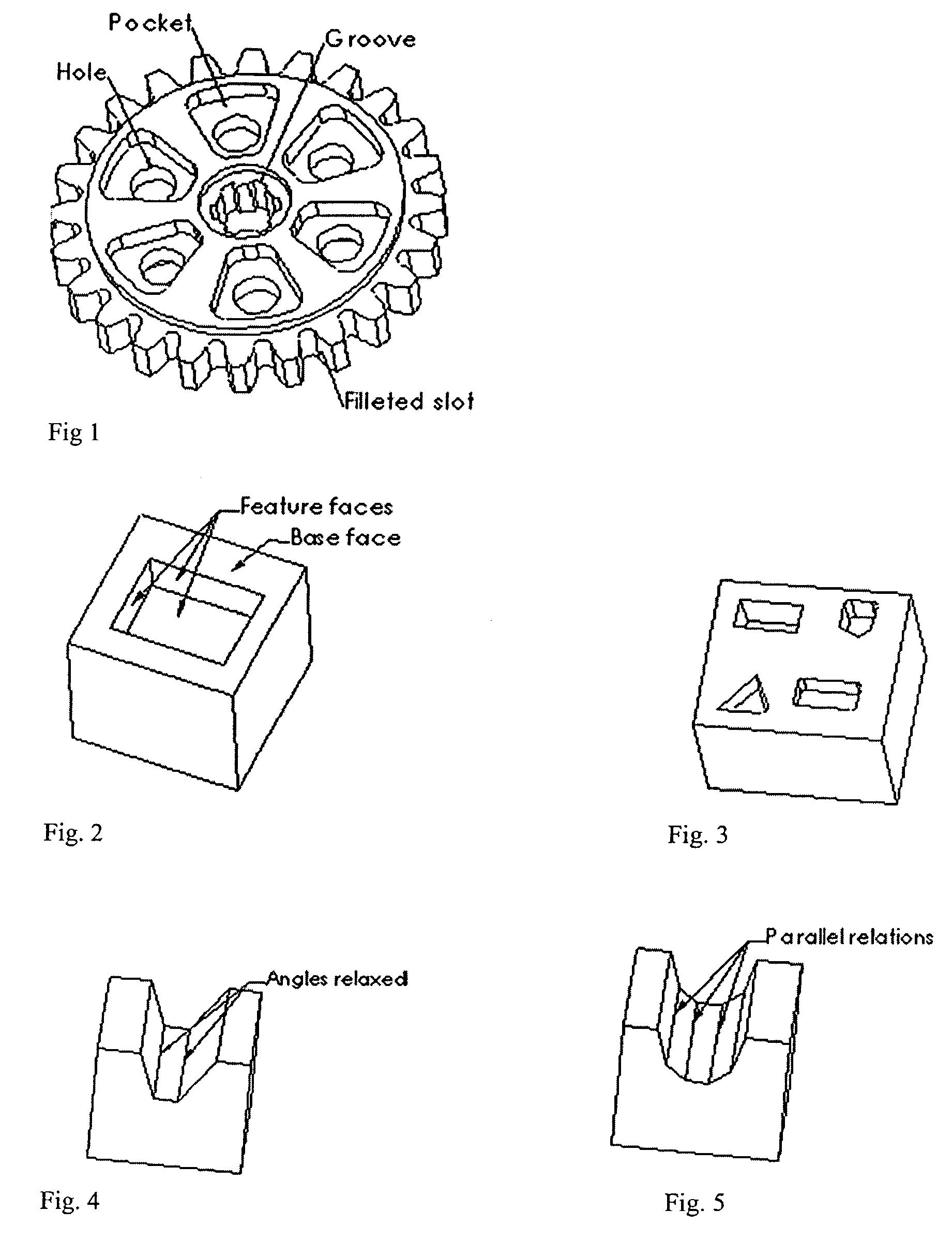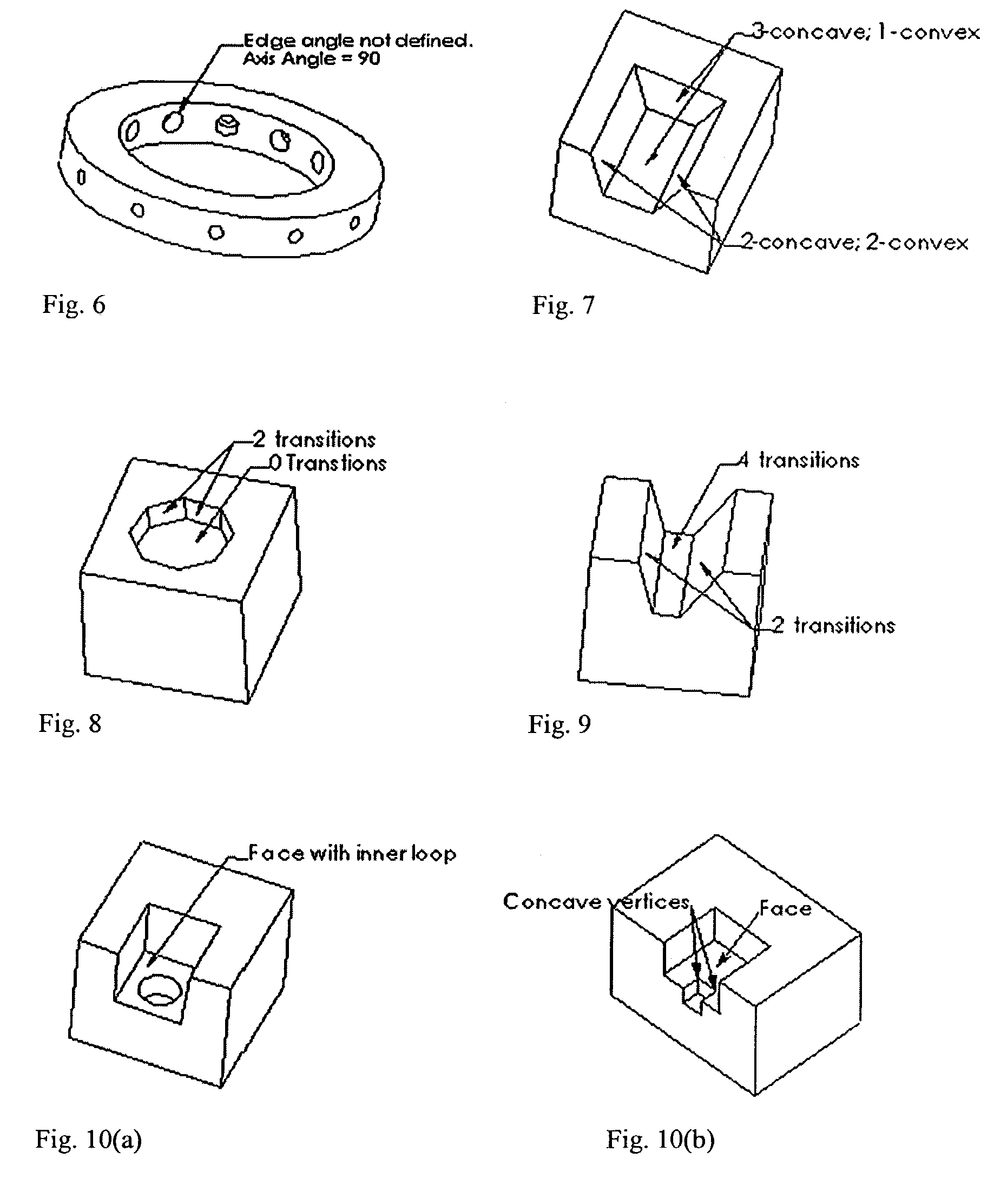Methods using specific attributes and graph grammars in graph-based techniques for feature recognition
- Summary
- Abstract
- Description
- Claims
- Application Information
AI Technical Summary
Benefits of technology
Problems solved by technology
Method used
Image
Examples
Embodiment Construction
[0088]Before considering the invention in more detail, some applications of the invention will be discussed so as to put the invention in context.
[0089]The feature recognizer aspect of the invention is mainly used in semi-automatic recognition of features. A feature is first defined by the end application using a suitable interface. Application specific parameters can also be interactively defined using the framework provided by the feature recognizer. The feature recognizer is then used to recognize similar instances of the feature in the model. The parameters can then be extracted from the features for down-stream applications.
[0090]The recognizer can also be used in conjunction with other feature recognition modules for quick face-set recognition. In this application, a set of faces is selected interactively that represents a complete or a portion of a feature. In a preferred embodiment, independent feature recognizers are launched locally to recognize the remaining faces of the ...
PUM
 Login to View More
Login to View More Abstract
Description
Claims
Application Information
 Login to View More
Login to View More - R&D
- Intellectual Property
- Life Sciences
- Materials
- Tech Scout
- Unparalleled Data Quality
- Higher Quality Content
- 60% Fewer Hallucinations
Browse by: Latest US Patents, China's latest patents, Technical Efficacy Thesaurus, Application Domain, Technology Topic, Popular Technical Reports.
© 2025 PatSnap. All rights reserved.Legal|Privacy policy|Modern Slavery Act Transparency Statement|Sitemap|About US| Contact US: help@patsnap.com



